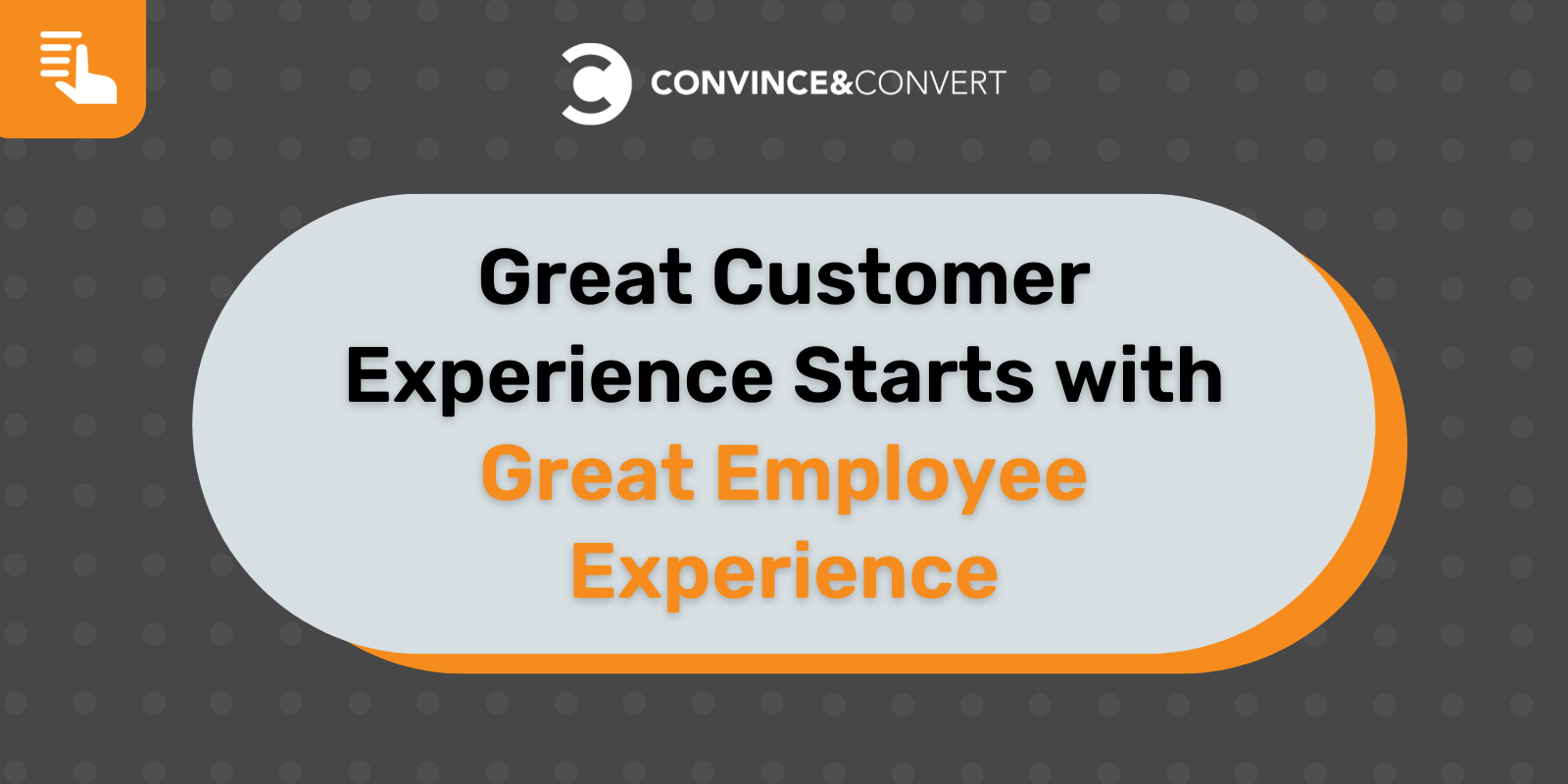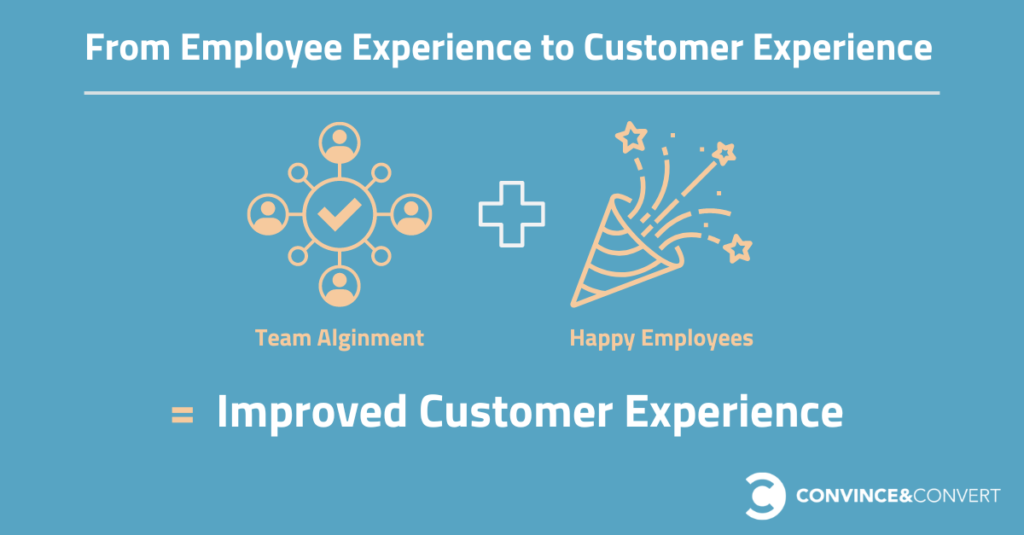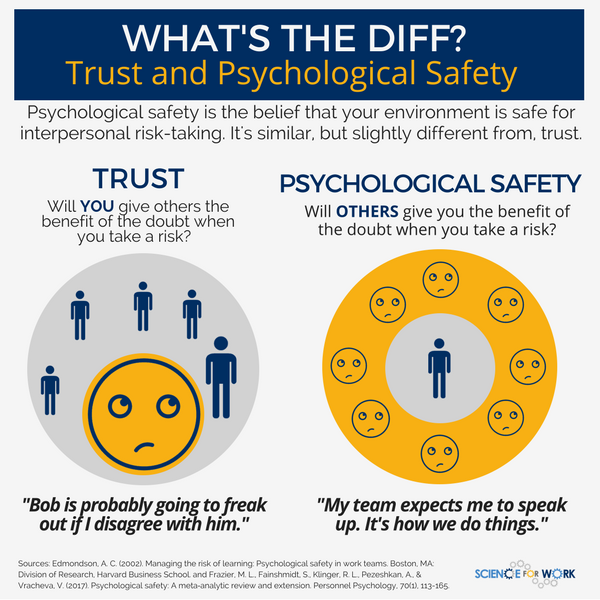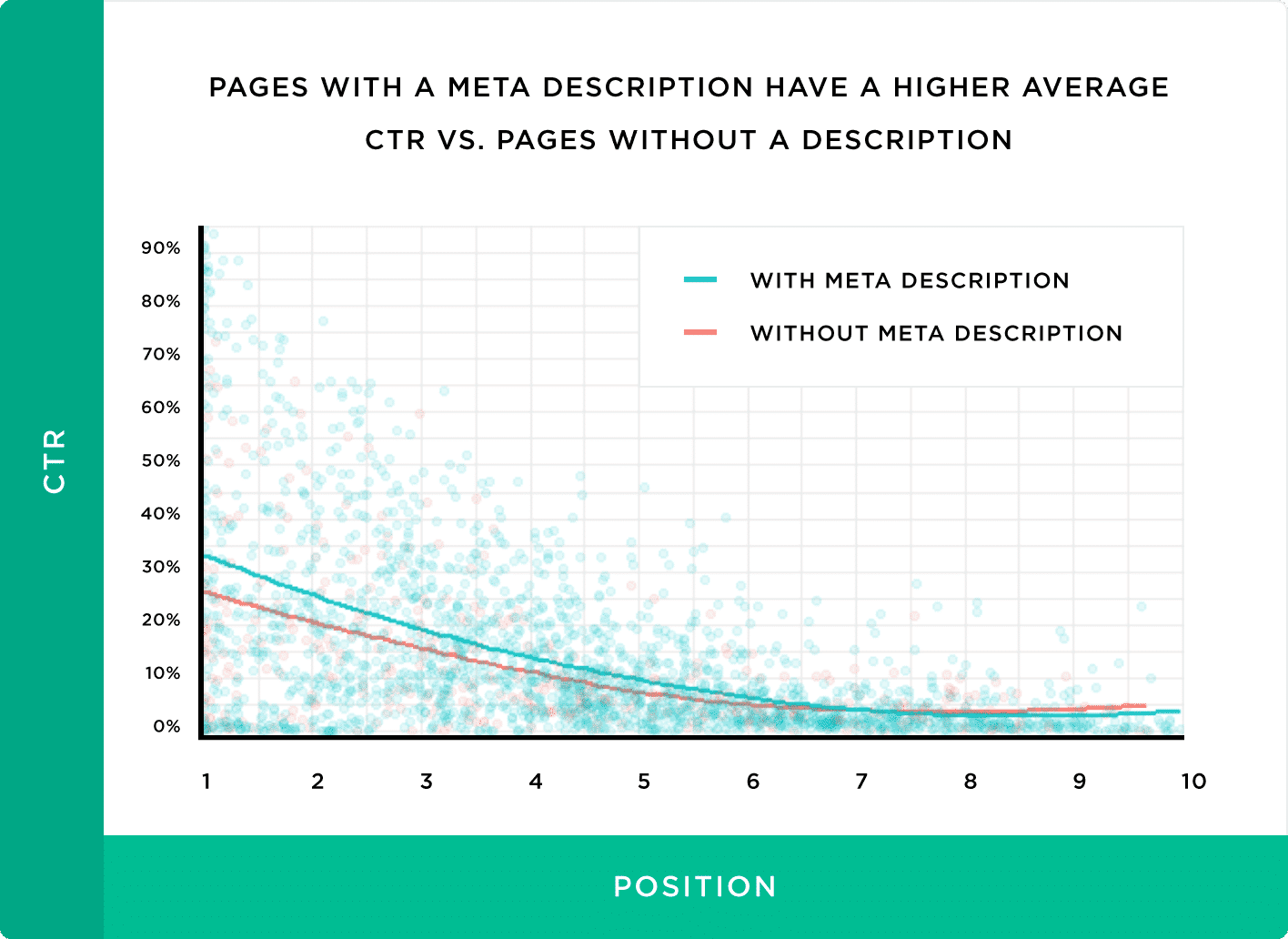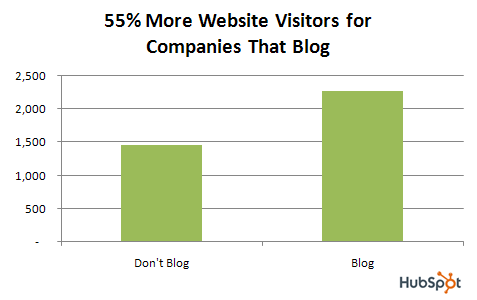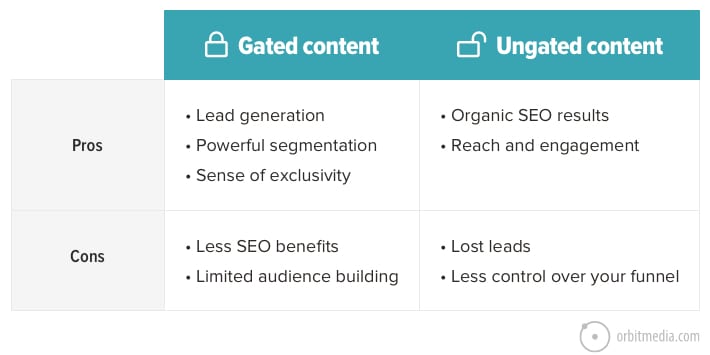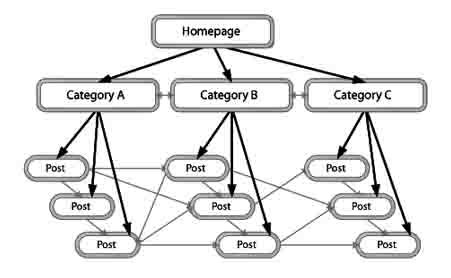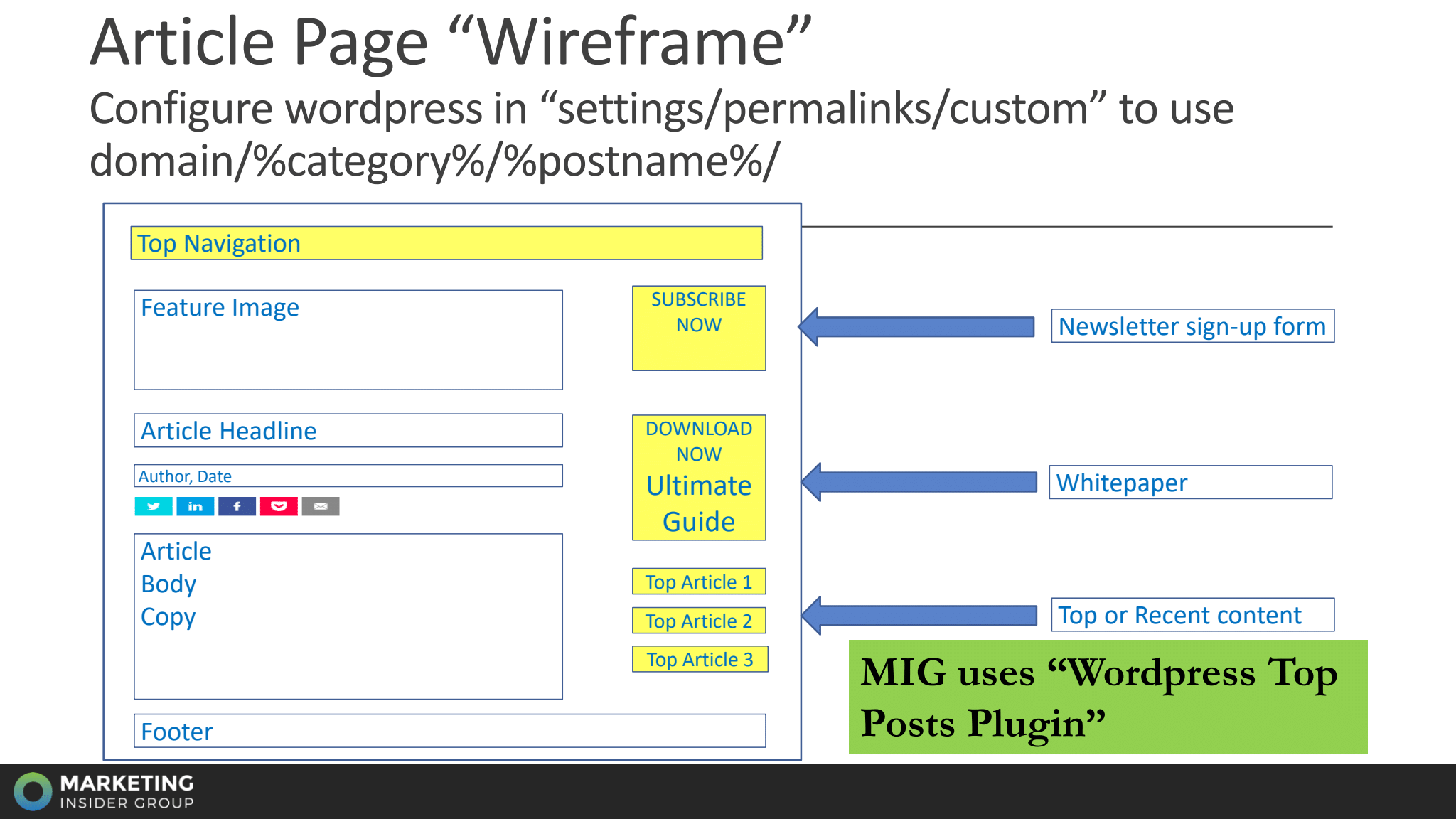
The perfect blog post does exist.
One that draws in new audiences, keeps readers engaged, builds your brand reputation, improves your SEO rankings, and converts customers.
There are more than 70 million blogs published every single month and most get very little traffic and no social engagement.
But your blog posts can accomplish exactly what they’re intended to do — whether that’s build readership, grow your subscriber base, improve your market position, or increase conversions and sales.
You can leverage your content to be in control of your own destiny.
Impossible, you think? We’ll show you why it’s not. And how to create the perfect blog post. One that generates pageviews, engagement, leads, and sales you can measure.
Quick Takeaways
- You can plan high-performing blog content with proven post formats and high-quality keyword research.
- Personas and customer journey maps help you build content around your customer needs and goals.
- Our “Anatomy of a Perfect Blog Post” provides the key components you need in every blog post.
- Best practices around readability, SEO and SERP optimization, and timing impact how well your content performs.
- Our final blog post checklist ensures you never miss a detail when you’re publishing content.
 Bonus: Here is a link to your own usable copy of our perfect blog post checklist. Just click on File, Make a Copy to create an edit-able version for yourself.
Bonus: Here is a link to your own usable copy of our perfect blog post checklist. Just click on File, Make a Copy to create an edit-able version for yourself.
Blogging Basics
Before we go step-by-step through writing the perfect blog post, we’ll start with some important basics:
- types of blogs
- keyword research
- customer discovery tools
- brand message
Without these, even the best blog idea will get lost. These serve as the foundation for all of your blog content.
Types of Blog Posts
How-Tos
How-to posts are popular because they help readers accomplish something specific. They cover step-by-step instructions and allow readers to leave with actionable ways to solve a problem or challenge.
Ultimate Guides
Ultimate guides give readers a comprehensive overview and detailed explanation of a topic. Guides include both research and examples, and they are meant to help readers increase their knowledge and understanding.
Listicles
Lists are easy to digest and fun to read. Listicle blog posts can list anything — tips, resources, dos and don’ts, examples — whatever is useful for your reader.
News and Opinion
News and opinion pieces can be great brand reputation builders because they show thought leadership. Providing your take on current events and giving your opinion on topics in your industry demonstrates expertise and gives you a chance to shape your brand’s personality.
Case Studies
Case studies are the perfect way to show what your brand is capable of by telling a story. They highlight the details of what you do well and give real examples of your success, building social proof and trust with potential customers.
Keyword Research
When most people think of keyword research their mind goes right to SEO, and there is no doubt it’s an important part of it. SEO is critical to search engine visibility and driving traffic to your website.
But there are also other benefits to keyword research that can help you shape blog posts to give your readers valuable content and ultimately increase conversions.
Keyword research gives you insight into your customer, what they’re searching for, and the intent behind their visit to your blog or website. It also helps you allocate dollars to the right keywords and shape other marketing and advertising efforts around them.
Finally, keyword research gives you a bird’s eye view of where the traffic is going around your industry.
We use tools like Semrush and Ahrefs to conduct quality keyword research that helps you create hyper-relevant, engaging content and optimally position your brand.
 PS – I put together these 10 tips for optimizing your content marketing. Watch Now!
PS – I put together these 10 tips for optimizing your content marketing. Watch Now!
Persona and Customer Journey
Content should always be created with a customer-first mindset, and there are two awesome tools you can use to better understand your customer: personas and customer journey maps.
Personas are fictional examples of your real buyers that help you build strategies for selling your products and services. Good personas are build around what your customers are trying to achieve. Focusing on customer goals makes your personas actionable for your brand and helps you make your content actionable for your customers, too.
Customer journey maps are visual representations of your customer’s journey from their first awareness of your brand through to making a purchase. They include all the touch points customers have with your brand throughout their journey.
Check out these videos for a more in-depth guide on creating personas and customer journey maps.
Brand Message and Content Strategy
Your brand message is the common thread that holds all of your content and other marketing efforts together. It’s your value proposition, the core of your brand, and you need to be 100% sure of what it is in order to create perfect blog posts (or any truly effective content).
Once you know your brand message, you can build a content strategy around it that shares your message in different ways. Blog posts are one of those ways.
Having your brand message and content strategy in place lays the foundation for planning the types of blogs you’ll write and the topics you’ll cover. Over time, it also makes for a content library that is consistent and complementary.
 PS – Check out our weekly blog content service to grow your website traffic and leads!
PS – Check out our weekly blog content service to grow your website traffic and leads!
Anatomy of a Perfect Blog Post
The perfect blog post looks a little different for every brand, but there are key components that are important to always include. Click here to download the anatomy of a perfect blog post or check it out below:

Blogging Best Practices
Your perfect blog post has all of the components it needs — great. But there are still some really important factors to cover to ensure your blog is engaging and enjoyable to read.
Readability
Your blog should read smoothly with no mistakes (even just one mistake can turn readers off to your brand) and the right tone. Here’s what to check:
- Grammar – It should go without saying, but you’d be surprised at how often otherwise great content has simple mistakes that are distracting and off-putting. Proofread your writing for grammar before you publish.
- Conversational tone – Blogs are a casual medium for customers to interact with brands. In general, it’s best to take a conversational tone and talk directly to your reader.
- Language Complexity – Here you’ll need to strike the right balance. While some industries are more technical than others, it’s usually best to avoid extra jargon and write in laymen’s terms so your content stays relatable.
- Skip the Fluff – Respect your reader’s time and only include content that’s relevant and adds value to the blog. Fluff content added just to meet word counts can hide the important content and make your content seem less valuable.
SEO and SERP Optimization
More than half of all organic website traffic is initiated by search, and 93% of all online experiences start with a search engine. Without optimizing your blog for search engines, you’re basically writing for no one. These SEO strategies ensure your blog posts are traffic magnets for your website:
Internal Links
Internal links are hyperlinks in your blog content that link to other pages within your domain. You should include 1-2 internal links in every blog post.
Article Title
Use your focus keywords in your blog title so it can contribute to your SEO ranking. Remember it’s also what the user will see on the SERP; a catchy title can significantly affect click through rates (CTRs).
Meta Description
Your meta description will appear under your title and should also include your focus keywords. Make sure your meta description is under 160 characters and describes your article in a compelling way that grabs attention.
Featured Snippet Optimization
Featured snippets are pulled from the top 5 or so search results for a given search and displayed at the top of the SERP to provide the most direct, relevant answer to the query. To increase your chances of inclusion in a featured snippet, use clear and concise language that directly addresses questions related to your keywords.
Hub Pages
Hub pages are central repositories for content covering a certain topic. They serve as a consistent place for you to link back to and send users looking for keywords related to the topic. There are several kinds of hub pages you can utilize to fit best with your content organization and strategy.
Skyscraper Content
Skyscraper content basically reverse-engineers standard SEO and keyword research. Rather than search for new keyword opportunities, you find a piece of high-performing content that ranks for relevant keywords and topics, then create an even better piece and promote it.
Length
Your blog length should always be as long as needed to effectively cover your topic, but the most successful blogs fall into the 1000-1800 range. Depending on the format of the post, some of your blogs will be longer than others (and that’s okay!).
Lead Magnets
Lead magnets are high-value content assets offered by brands in exchange for a person’s contact information. They need to offer something different than your free web content.
A good question to ask when thinking about lead magnets is: “What would my reader want next after reading this content?” In addition to offering high value, you want your lead magnets to be specific, easily accessible, and actionable for your reader.
Some great examples of lead magnets include access to gated content, purchase discounts, PDF checklists and guides, e-books, digital tools, and video resources (like topic webinars).
Engagement
It goes without saying that your content can’t be boring, but it takes even more than an interesting topic or even great writing to make your content engaging. Try these tactics (maybe not all at once!) to make your content more naturally engaging and interactive for readers.
Controversy or Strong Opinion
It’s good to have strong, informed opinions about relevant topics (even controversial ones) because your reader is looking for expert commentary and help forming their own understanding and opinions.
This doesn’t mean diving into highly sensitive or political topics that could cause a stir (although that’s fine if it works for your brand and makes sense in your industry). Controversy can mean addressing buzzworthy topics in your industry from a different perspective, like when we suggested that actually, a lot of buyer personas really suck or when Justyna Polaczyk suggested that the customer is not always right.
Comments
Keep the comments open and respond to people who take the time to give you feedback. The comment section of your blog is where some of the best thought leadership happens as industry professionals discuss the blog topic. It’s also a place to get direct reader feedback and respond to questions.
Social Sharing Options
First thing’s first: you have to create content people want to share. When your blog content is interesting and engaging there’s a higher likelihood your readers will share it with their friends or post it on social media, helping you drive more traffic to your blog.
You also want your content to be easy to share. Make social media buttons prominent and enable tools like Click to Tweet so people can easily repost your blogs.
Call to Action (CTA)
Don’t just publish content and hope for the best. Remember your customer journey? You have to help your readers get to the next step!
CTAs tell readers what their next step is for interacting with your brand, and they can increase conversion rates by 121%. Include calls to action like starting a free trial, subscribing to an email list, or scheduling a free consultation. Whatever you do, definitely don’t leave your readers with no clear option.
Interactive Element
Create a content experience by using interactive elements that encourage readers to actively participate somehow. Use tools that allow your readers to vote on polls, include video content they can watch, and call out specific things for them to comment on in your comment section.
Design
- Font – Don’t overlook your blog font! It’s a great way to show your brand’s personality. The main rule: choose something readable. Look into the most popular blog fonts and strategies for choosing one.
- Mobile viewability – More than half of all content is being viewed on mobile. Your content should be at least mobile-friendly but ideally mobile-optimized.
- Visual CTAs / Banners – Adding visual CTAs (like clickable buttons or forms) and banners within your blog post can break up long text and help drive conversions.
Timing of Publication
When you publish and share your content is just about as important as what you put in it. While you won’t find a magic day and time of the week when you should always hit the publish button, there are important timing considerations to always keep in mind as you manage your content calendar and publish your blogs:
Time Zones
Who is your audience and where do they live? It’s going to affect when you want to publish your content.
Don’t think about the time zone where you’re publishing but the one where your target audience is located. If you publish and share in the middle of their night, your tweets and social shares have already fallen down the feed by the time they log on.
Type of Content
When would your audience want to read your content? If it’s a how-to they would use during the workday, you could publish it earlier so they can see and use it during working house. If it’s a longer opinion piece, you might want to wait until the end of the workday when people can sit down and really digest it.
Social Sharing
It’s always a good idea to share your blog posts right away when they’re published. Utilize automatic social sharing through your content management system when you can, and schedule follow-up posts to give it a boost.
Blog Frequency
Blog post frequency directly impacts organic traffic. To really see the best results you should aim to post 2-4x per week.
Consistency is really the key to driving traffic, so the most important thing is for your brand to create a schedule and stick to it.
Social Media Platform Trends
While there’s no universal best time for publishing your blog, individual social media sites track engagement traffic and trends. You can align your content schedule with the highest engagement times for the platforms you use, but remember by posting at the busiest times you also run the risk of more competition around you.
Promotion
- Email – Feature your blog posts in your email marketing plan
- Social media – Always share posts on social media simultaneously at the time you publish them.
- Influencers – 75% of brands who have a content marketing budget allocate resources to working with influencers. Influencers can increase your visibility, help shape your brand personality, and build trust for your band with their follower base.
- Link Building – As you blog consistently, establish your brand’s position, and increase your rankings, other brands will share your content more in their own blogs. This helps to enhance all of the above metrics.
Repurposing
You don’t have to reinvent the wheel every time you need new content. In fact, when you know a certain topic or piece is getting high traffic and engagement, it’s a good strategy to repurpose that content in new ways.
You can repurpose content by distributing it in new formats like infographics, e-books, and videos, or syndicating it like we talked about already.
 PS – Check out our latest case study that shows how we helped one company double their leads!
PS – Check out our latest case study that shows how we helped one company double their leads!
The Prefect Blog Post Checklist
Use our proven perfect blog post checklist to be certain you never publish imperfect content. Read it over before you start and go through it before you publish every blog post (we always do!).

Did you research the keyword to understand the search intent? What do the top articles on Google for your focus keyword cover? Gain a deeper understanding and context of what people want when entering a specific query on search engines
Did you outline the article based on key information from top-ranking content? Study the top performers on Google for your topic. Chances are, if those articles are ranking on page one, you can benefit from covering similar points and following a similar format.
Did you answer who, what, why, how, when, and where? Addressing your topic holistically will give visitors more thorough answers to the questions they’re asking.
Did you include 3-5 key takeaways? You can pull these out and add them at the beginning of your article in a bulleted list or simply incorporate throughout your piece. Just make sure they’re easy to digest and remember.
Did you use the focus keyword in the title? If you want to rank for your focus keyword, you should integrate it into specific locations throughout your blog post. That way, Google and visitors understand what you’re covering in the article.
Did you add the focus keyword to the meta description? Here’s another important place to add your primary keyword. Your meta description should be fewer than 160 characters and describe or summarize your article.
Is the focus keyword in the image alt tag? After finding a relevant image for your article, add alt text that accurately describes it. Integrate your keyword naturally (so it doesn’t feel forced).
Did you incorporate the focus keyword into the first sentence or paragraph? Adding your focus keyword at the beginning of your article helps users know they’re in the right place. It also tells search engines your blog post is covering what it claims.
Is the focus keyword in a subheading? Incorporate your keyword naturally into at least one of your main subheadings, preferably your first Heading 2 (H2) tag.
Did you use semantic variations of the keyword throughout the article? Add some closely related keywords to your original keyword to give search engines more insight into your topic and page. Addressing related queries also helps you go more in-depth on the subject.
Did you source a relevant image by searching for the focus keyword and cite it in your blog as an example? Visuals attract attention and help tell a story. Your featured image should give readers a good idea of what to expect when reading your post.
Did you embed a relevant video from a focus keyword search and cite it as an example? 69% of people prefer watching a video to learn about a product or service.
Did you add at least two internal links throughout the content? By linking two articles that cover similar or complementary content, you’re establishing a hierarchy on your website and showing Google how it’s structured to increase crawl-ability.
Is there at least one external link with a high domain authority (DA) that connects readers to a statistic, quote, or research? Experts believe external links are the most important source of ranking power. Search engines consider external links as “third-party votes.”
Did you add a relevant and contextual call to action (CTA) at the end of the article? Placing a strategic CTA at the end of your article will encourage users to take further action to lead them down the sales funnel.
Are sentences 2-4 lines or text or less? Short sentences are easier to comprehend. If you’re too wordy, you’ll quickly lose people.
Are paragraphs no longer than 4-5 lines of text? Short paragraphs are much easier to read (and less intimidating) than long ones.
Did you use bullet points to break up large blocks of text and summarize key points? Bullet points help keep your page organized and scannable.
Did you write the article in active voice? The active voice sounds direct and confident while keeping your writing concise and easy to understand. You’ll use fewer words and more efficiently convey your message than if you were writing in the passive voice.
Is the blog post 1000-1800 words long? Blog posts should be as long as necessary to address a topic comprehensively. However, the most successful blog posts are more than 1000 words. “What is” blog posts should be at least 1300. “How to” articles should be at least 1700. Listicles should be longer.
Ready for perfect blog posts?
Writing the perfect blog post is hard, but our trained writers can do it for you — not just once, but every week for a year (or more). Learn about our Content Builder Services and schedule a free consultation to get started today!
The post Your 20-Step Checklist to Write the Perfect Blog Post appeared first on Marketing Insider Group.


